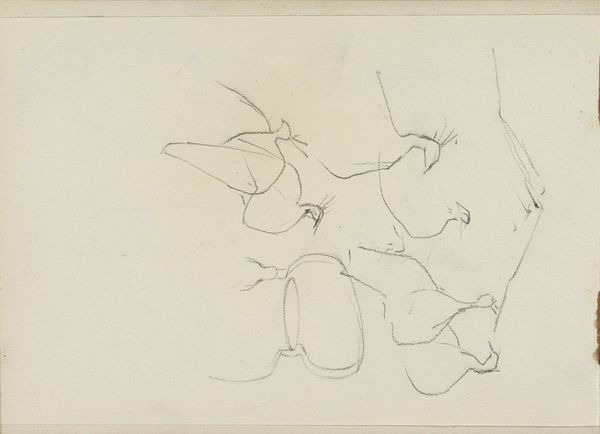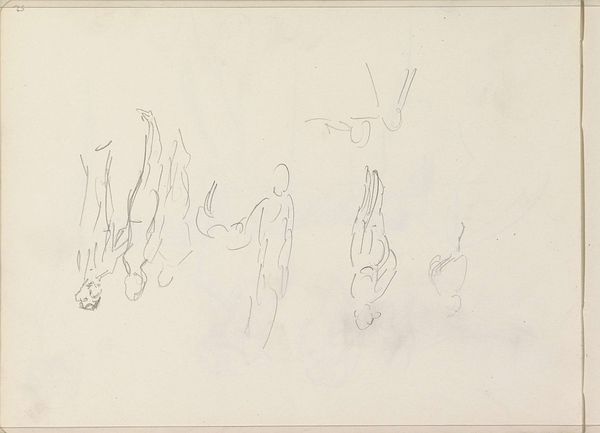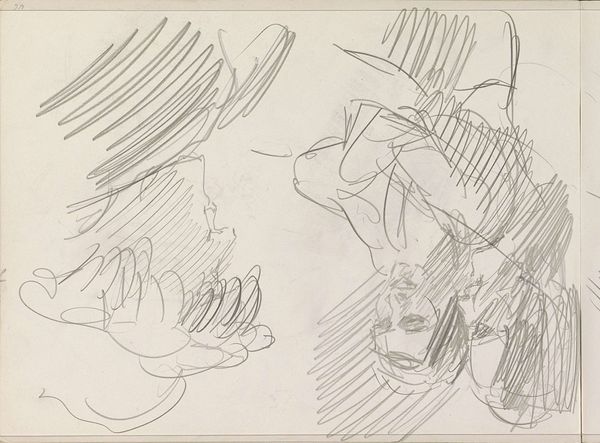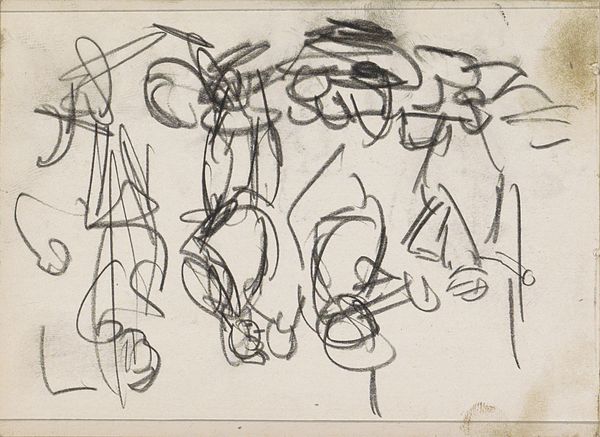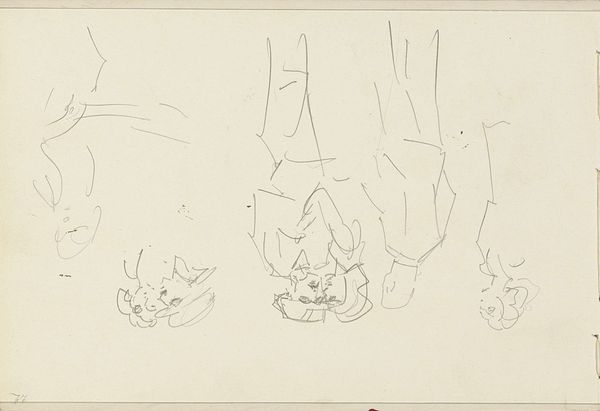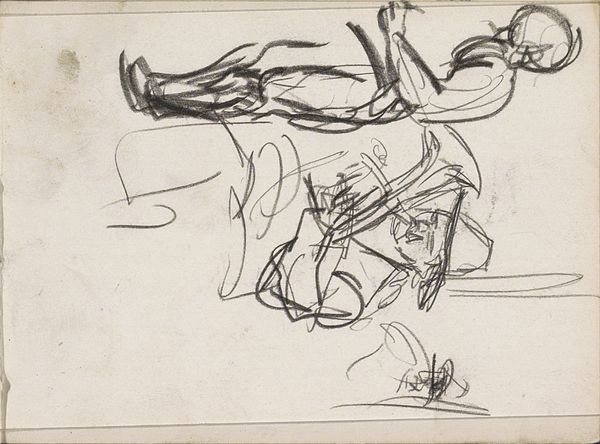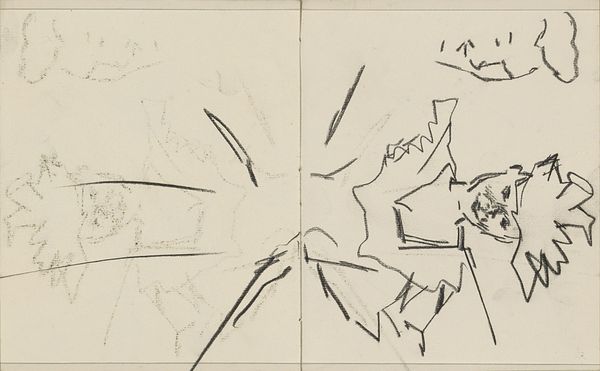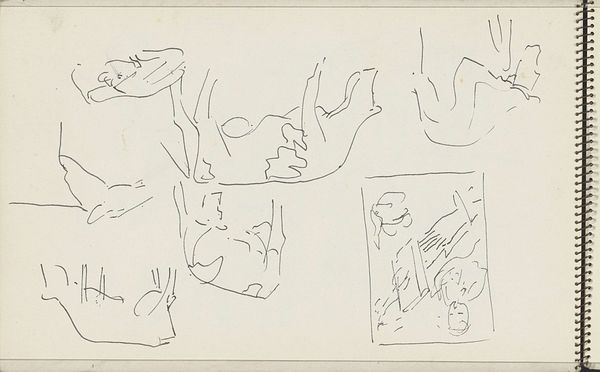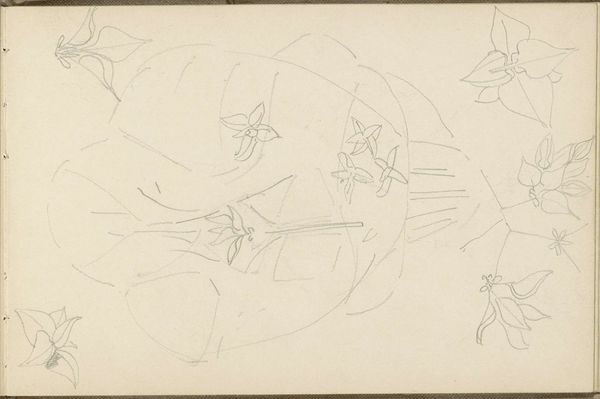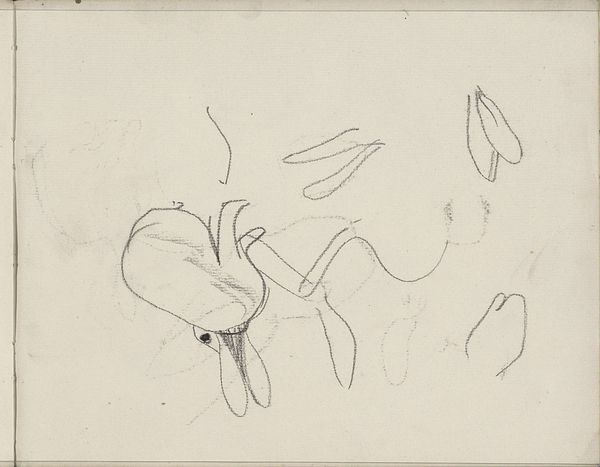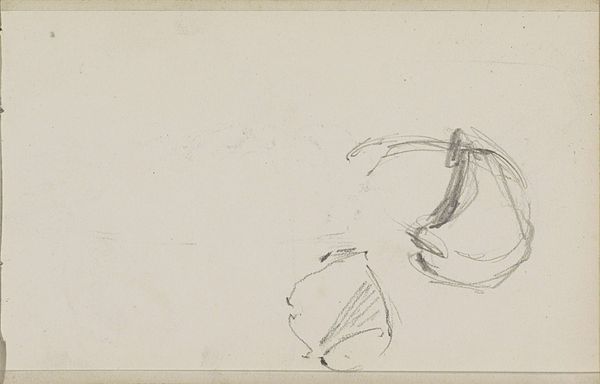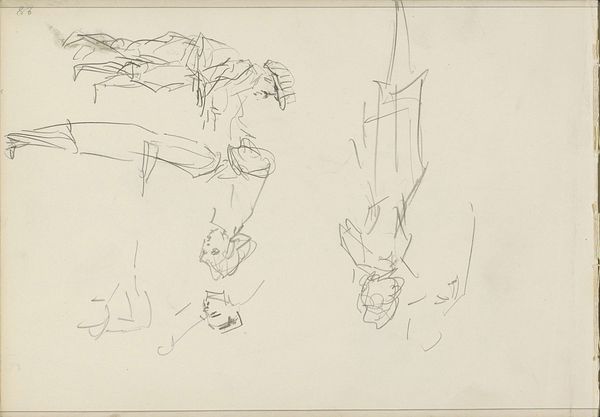
Copyright: Rijks Museum: Open Domain
Curator: Here we have "Vier staande vrouwen," or "Four Standing Women," a pencil drawing by Isaac Israels. The work dates between 1875 and 1934 and resides here at the Rijksmuseum. Editor: My first thought? Fleeting. These women feel like sketches caught mid-motion, ephemeral impressions rather than fixed portraits. Curator: Precisely. Israels, a key figure in the Dutch Impressionist movement, prioritizes capturing a sense of immediacy. The light pencil strokes almost dematerialize the figures, speaking to a shifting reality. Consider the socio-political contexts during this time period: changing roles of women in society. How might this relate? Editor: Definitely a liberation of line. It feels very contemporary. I almost get a feeling of figures dissolving into pure movement. It reminds me a little of Degas' dancers but without that feeling of enforced control—it's far looser. Were these women dancers? Curator: The sketch itself does not provide any context regarding their profession or purpose, thus we're urged to fill those gaps ourselves, aren't we? We might reflect on broader ideas concerning femininity and the modern gaze that were just surfacing at that time. The quick rendering and repetition might imply mass representation and consider women as a class within the larger social sphere. Editor: Right, a mass representation, though even the sketchiness contains individuality, or potential individuality. It feels as though the viewer has the opportunity to provide a sense of personhood. This feels far from a finished piece and leans more towards an experiment. Do we know anything more about it? Curator: It is likely a preliminary sketch and would provide important context as an example within Israels' creative process. Such artistic approaches served to underscore the experience of women navigating rapid social transformation, not as objects but as active figures in modernity's unfolding drama. Editor: Looking at this I'm feeling invigorated. It urges an almost collage-like imagining; taking small parts and crafting a greater narrative or story from its abstraction. A compelling and lively study overall. Curator: Indeed. By focusing less on rigid definition, this work actually reveals more. Perhaps even of ourselves and our projections.
Comments
No comments
Be the first to comment and join the conversation on the ultimate creative platform.
